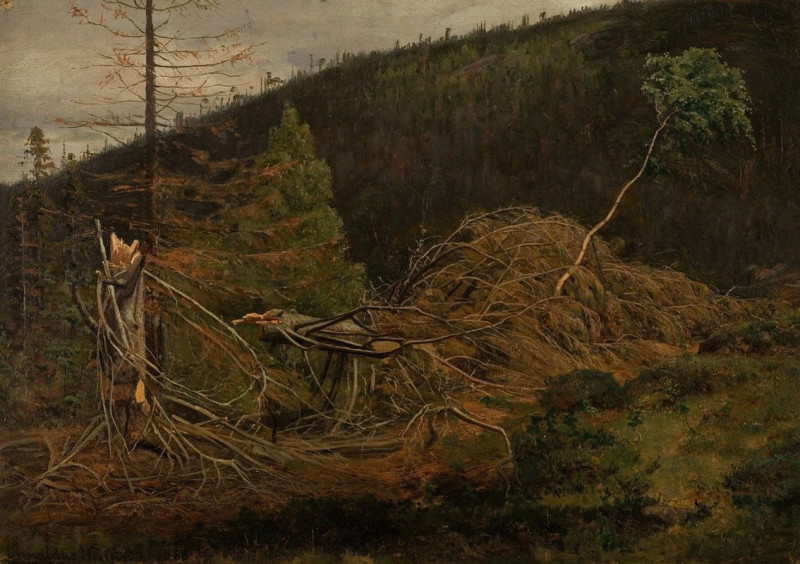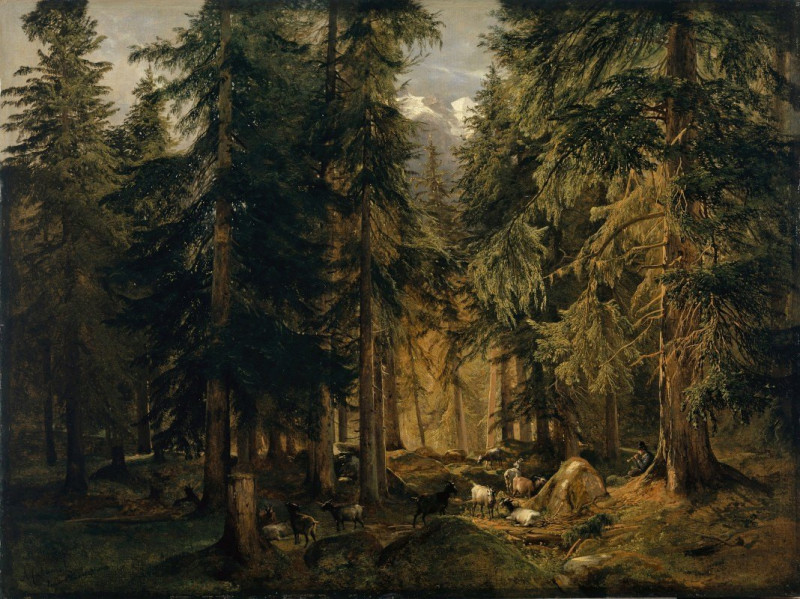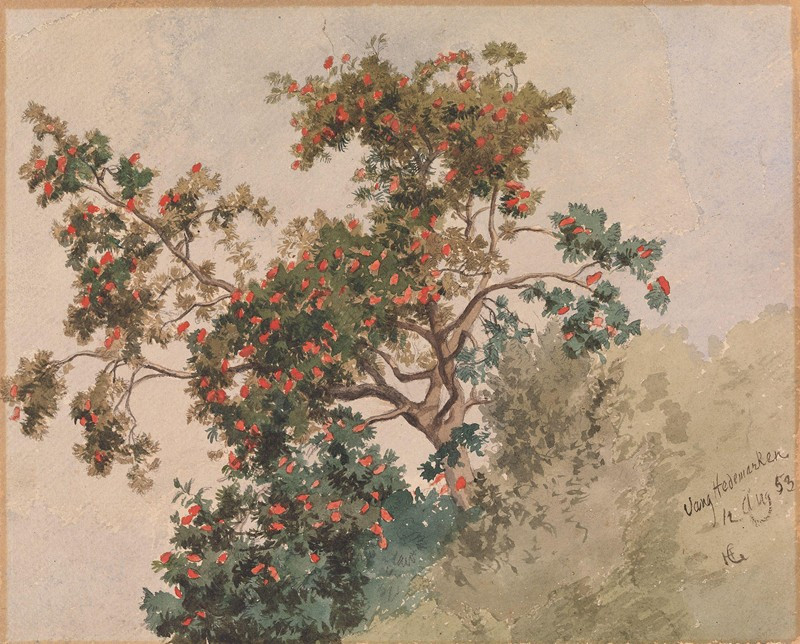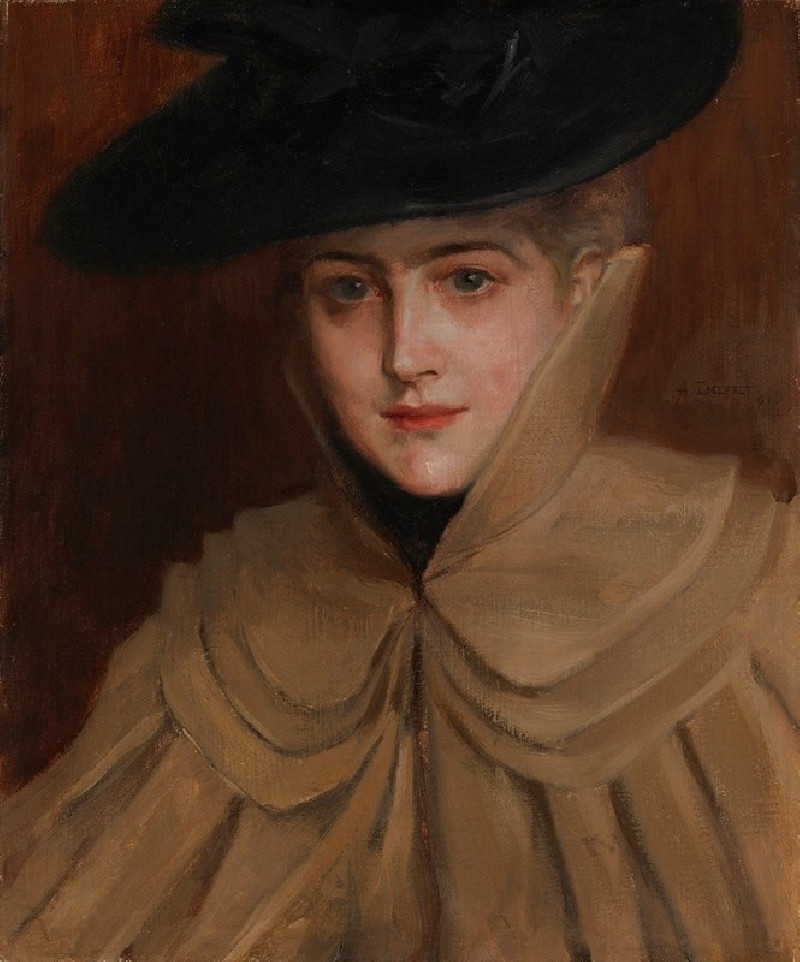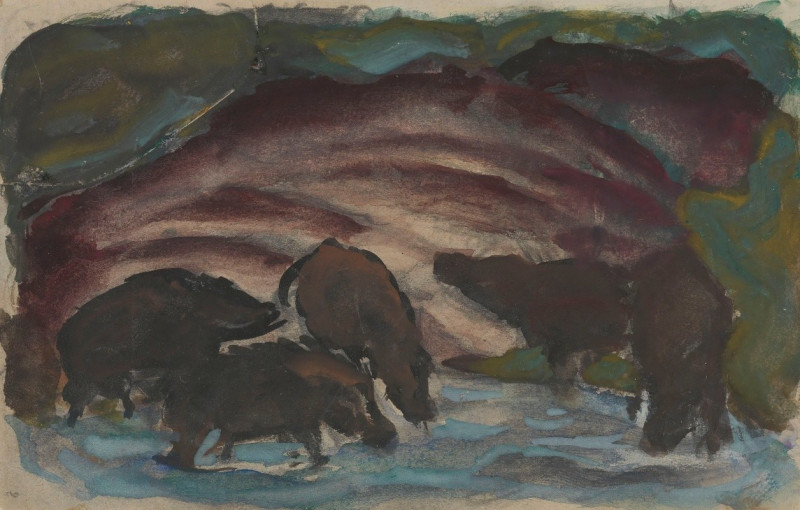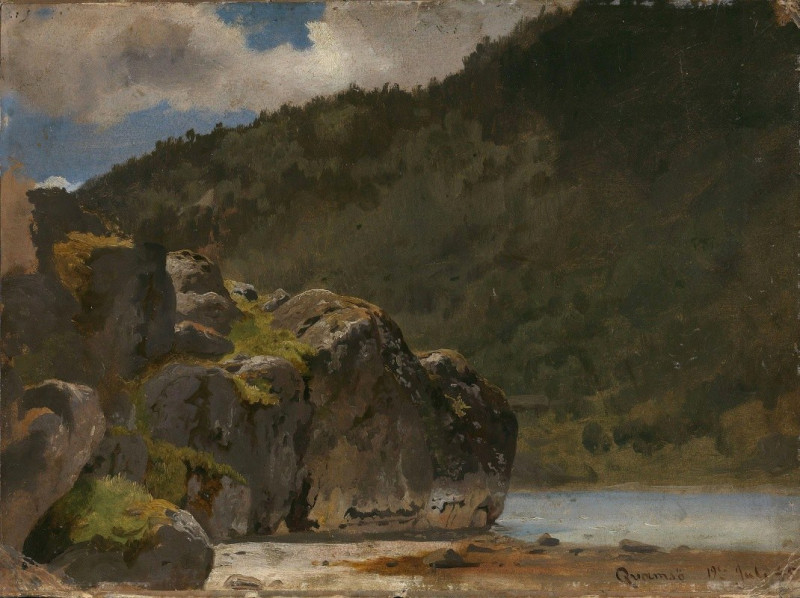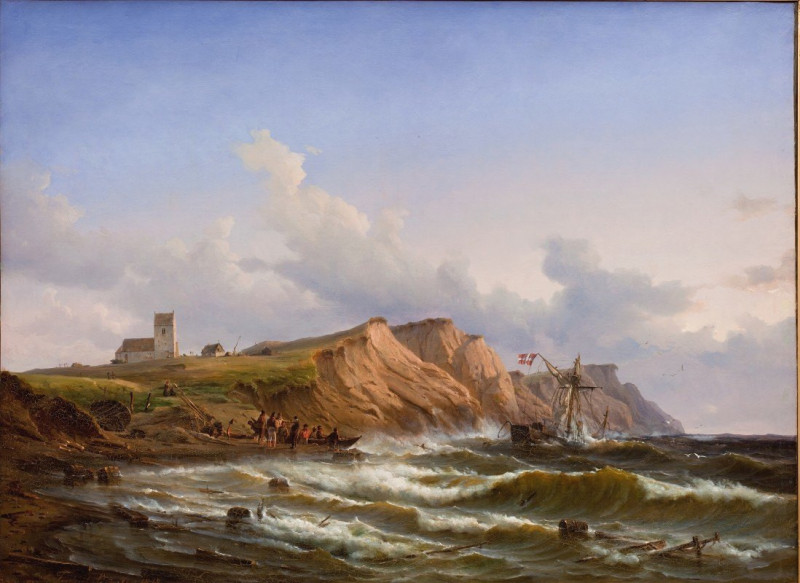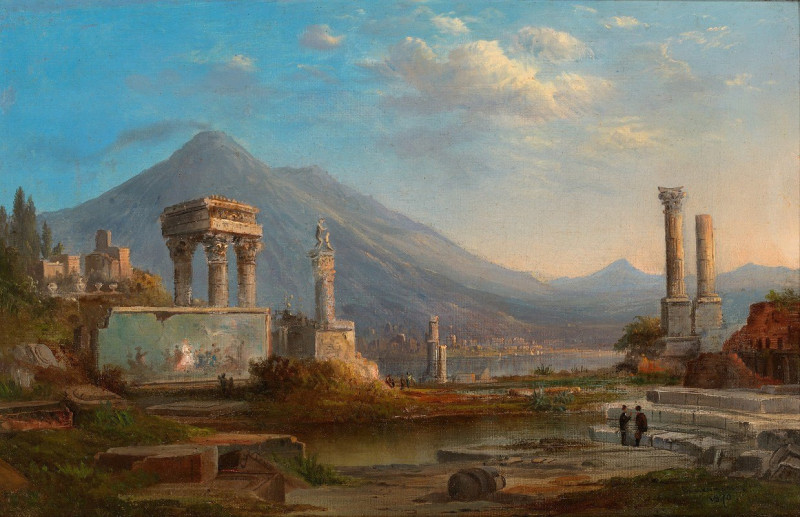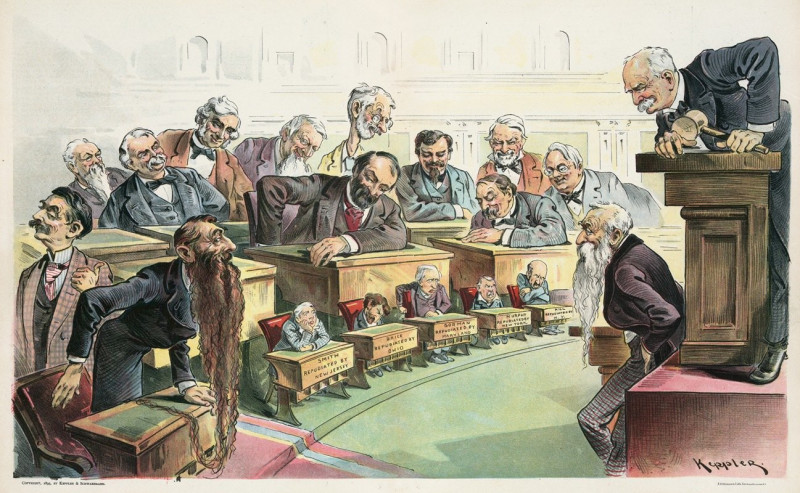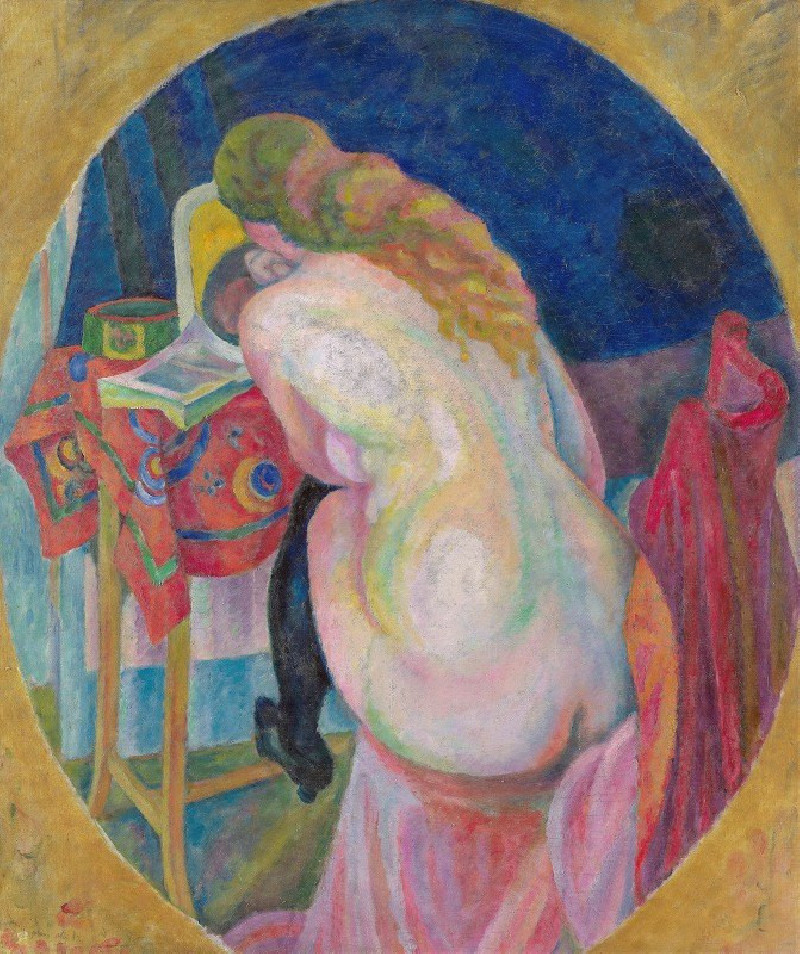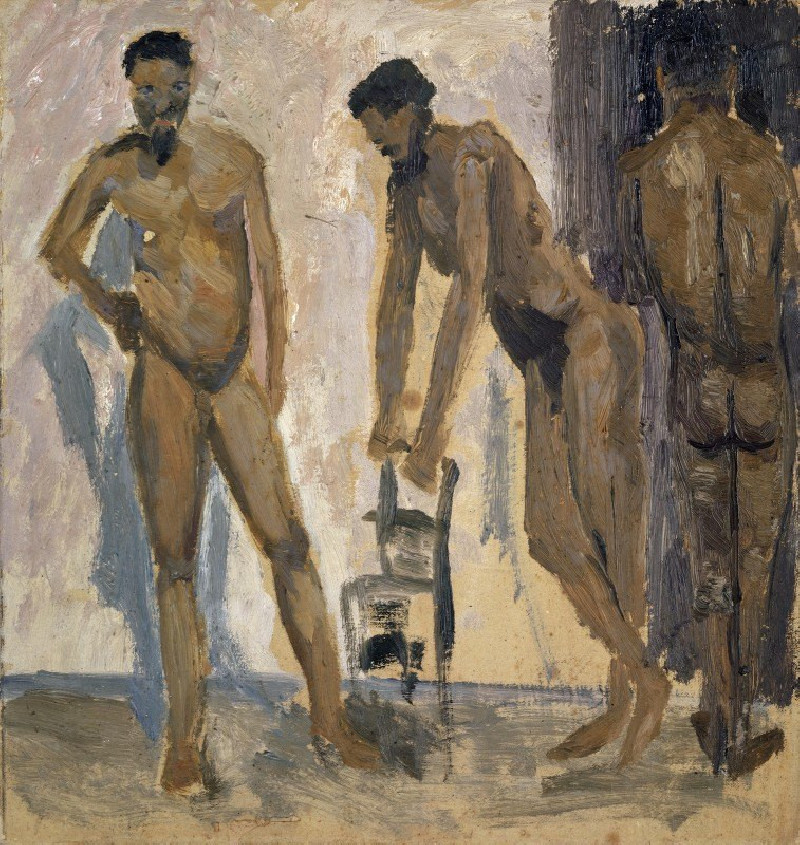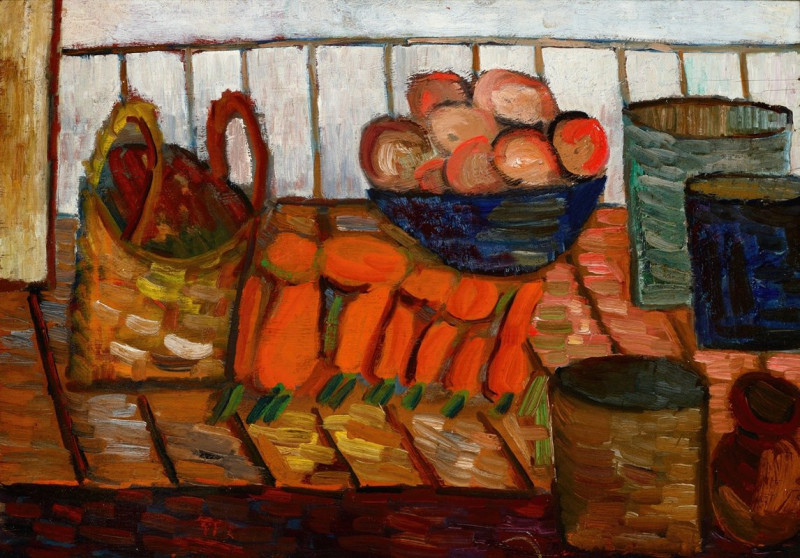Naturstudie XLIV (1924)
Technique: Giclée quality print
Recommended by our customers
More about this artwork
We are proud to showcase "Naturstudie XLIV" by Karl Wiener, a striking piece from the year 1924. This captivating landscape painting presents an exuberant sunset that bathes the scene in a glorious spectrum of colors. The artwork features a series of rolling, dark hills that form a serene horizon under a vast expansive sky. The sky itself is a masterful gradient of colors, transitioning from a deep blue at the top, through bands of purple, yellow, and finally into a vibrant orange at the horizon where the sun is setting.The use of colored crayons gives a textured vibrance to the scene, allowing each stroke to resonate with energy and movement. Notable are the soft, swirling patterns in the clouds which add a dynamic contrast to the solid, undulating forms of the hills. This tableau is not just a mere representation of nature, but a vivid interpretation that evokes emotion and contemplation.Karl Wiener’s use of bright, bold colors offset by the dark silhouetted landscapes conveys a moment of quietude as day gives way to night, reminding us of the ever-changing beauty of the natural world.
































